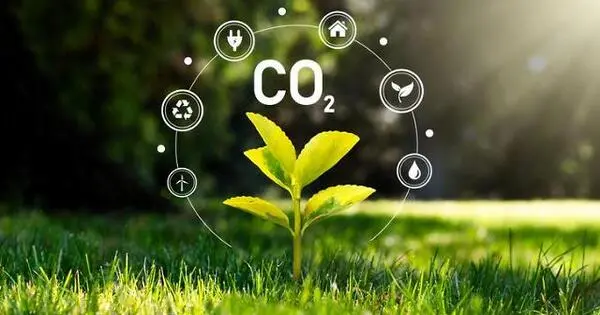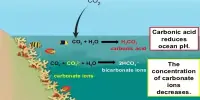Carbon dioxide removal (CDR) refers to technologies and methods that actively remove carbon dioxide from the atmosphere in order to reduce the overall concentration of greenhouse gases and mitigate the impacts of climate change. Sharing the burden of CDR refers to the idea that different countries, regions, and sectors should share the responsibility for implementing CDR measures, rather than placing the burden solely on certain countries or groups. This could be accomplished through a variety of means, such as international cooperation, carbon pricing, and the development of global carbon markets.
To achieve the climate goals outlined in the Paris Agreement, carbon dioxide removal is essential. A recent study examines what burden-sharing fairly and equitably means for the removal of carbon dioxide from the atmosphere in developing nations.
It is obvious that we will need to go beyond restricting emissions and actively focus on removing carbon dioxide from the atmosphere if we hope to meet the Paris Agreement’s goal of limiting global warming to 1.5–2°C in comparison to pre-industrial levels. However, there have only been a few discussions and studies on how nations should divide the cost of removing carbon dioxide, and those that have mostly focused on developed nations and major emitters. We must include developing economies in our analysis and discussions in order to achieve the global goals.
An international team of researchers led by IIASA examined carbon dioxide removal quotas for developing countries while keeping equity and fairness in mind. The study, which was published in the journal Nature-Based Solutions, employs a diverse set of allocation methods on a variety of global emissions scenarios to address equitability in the burden of climate change mitigation.
The study is unique because it looks at the issue from the perspective of developing countries. Because of this, the study has a far more rigorous methodology in evaluating potential carbon dioxide removal requirements compared to previous studies.
Bintang Yuwono
In comparison to previous studies, the allocation methods were based on expanded equity principles, which included the Right to Development principle in addition to the other principles of Responsibility, Equality, and Capacity. The team used these methods to convert global climate targets into national quotas and assess the implications for developing countries.
Carbon dioxide removal can be achieved by either using technology and engineering methods, or through natural climate solutions, such as conservation, restoration, and improved land management. Given the large potential for natural climate solutions in tropical developing countries, the study focused on seven of these (Brazil, Colombia, Democratic Republic of Congo (DRC), India, Indonesia, Malaysia, and Mexico) which together cover ∼35% of global cost-effective natural climate solutions potential.

“The study is unique because it looks at the issue from the perspective of developing countries. Because of this, the study has a far more rigorous methodology in evaluating potential carbon dioxide removal requirements compared to previous studies,” says Bintang Yuwono, co-lead author of the study and a researcher in the IIASA Biodiversity and Natural Resources Program. “The conclusions of the study point to a paradigm shift in using top-down burden-sharing approaches to inform climate change mitigation.”
The researchers discovered that the potential for carbon dioxide removal quotas for these seven countries ranged from 0.1 to 29 gigatonnes of CO2 across the allocation scenarios. The findings also revealed inherent bias and significant heterogeneity in quotas across allocation methods, making agreement on a ‘equitable’ quota unlikely.
Furthermore, the researchers cautioned that if ambitious quotas are implemented in countries with large forest areas, it may lead to competition between natural and non-nature-based solutions, to the detriment of emissions reduction, biodiversity, and the benefits that people can derive from nature. As a result, it is critical not to use these quotas to inform climate targets, but rather to use the results to foster greater ambition in voluntary cooperation mechanisms.
“The research shows that fairness is important not only from an ethical standpoint, but also contributes to more effective recommendations that address emission reductions from sustainable land management,” says Ping Yowargana, study co-lead author and IIASA Biodiversity and Natural Resources Program researcher. “Manifesting ambition should shift from top-down target setting on superficial parameters such as tons of carbon dioxide to detailed policy deliberation on more fundamental issues. Unfortunately, this still necessitates a significant amount of effort.”
















